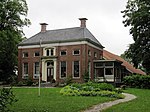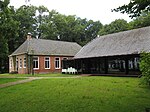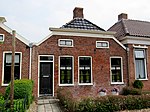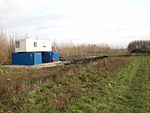Rechthuis (Bellingwolde)
1643 establishments in the Dutch RepublicBellingwoldeBuildings and structures completed in 1643Former courthouses in the NetherlandsPages with Dutch IPA ... and 1 more
Rijksmonuments in Groningen (province)

The Rechthuis (Dutch pronunciation: [ˈrɛxtɦœys]; English: Law House) is a former courthouse in the village of Bellingwolde in the Netherlands. The building with two crow-stepped gables was established in 1643 and used as a civil court for the area Bellingwolde-Blijham until 1811. The building has been a national heritage site since 1972. It is currently used as a private residence.
Excerpt from the Wikipedia article Rechthuis (Bellingwolde) (License: CC BY-SA 3.0, Authors, Images).Rechthuis (Bellingwolde)
Hoofdweg, Westerwolde
Geographical coordinates (GPS) Address Nearby Places Show on map
Geographical coordinates (GPS)
| Latitude | Longitude |
|---|---|
| N 53.120833333333 ° | E 7.1663888888889 ° |
Address
Hoofdweg 235
9695 AH Westerwolde
Groningen, Netherlands
Open on Google Maps











